
Alexis Hanquinquant (FRA), Tokyo paralympic champion in the PTS4 category, at the Paris test event in 2023.
If you think triathlon is tough, you have to watch the Para-triathlon at the Paralympics on 1 and 2 September. These incredible athletes take the already challenging sport of triathlon to the next level, overcoming disabilities while mastering multiple disciplines. Prepare to be inspired by this extraordinary display of human resilience.
We’ve put together an explainer to help you better understand what you’ll be watching. And did you know that MetaSport has also welcomed para-triathletes at its events?
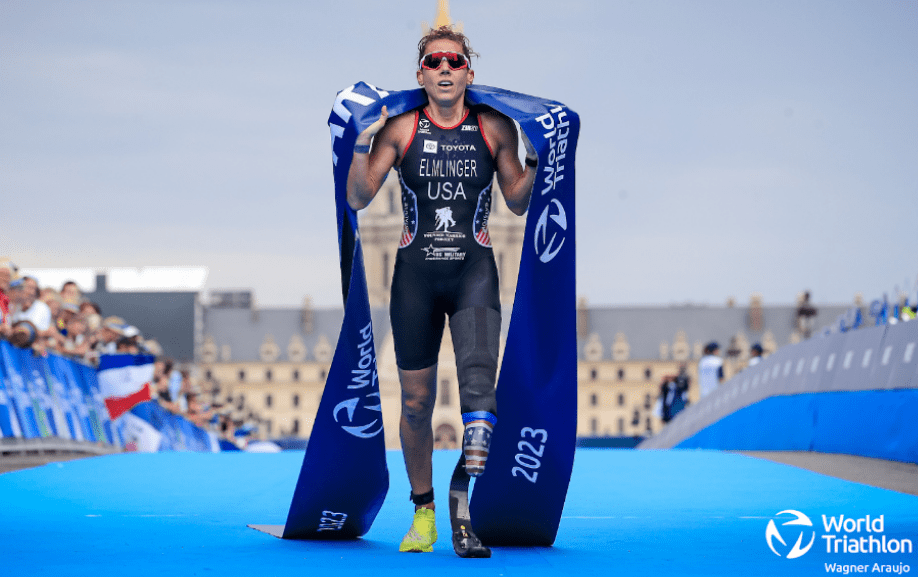
Kelly Elmlinger (USA), reigning world champion in the PTS4 category, at the Paris test event in 2023
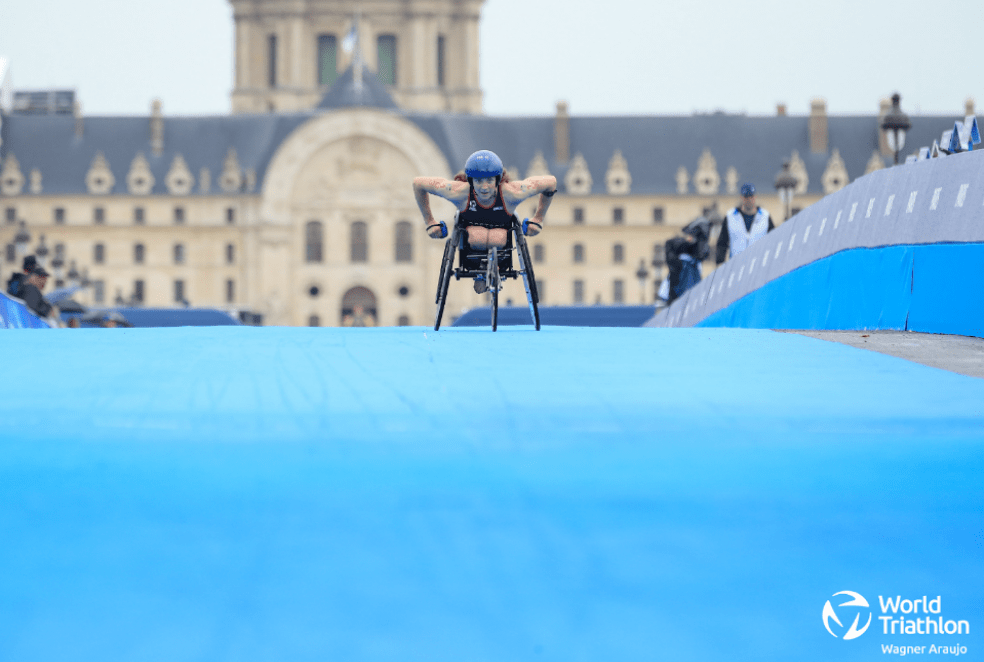
A female PTWC athlete on the finish carpet at the Paris test event in 2023
Para-triathlon 101

Para Triathlon Pictogramme for the Paris 2024 Paralympic Games
Introduced to the Paralympic Games in Rio 2016, the Para-triathlon consists of a Sprint distance: a 750-meter swim, a 20-kilometer bike ride, and a 5-kilometer run.
In Para Triathlon, classifications are designated by the letters PT (Para Triathlon) followed by a code representing the type of disability – WC for wheelchair users (PTWC), S for standing athletes (PTS), and VI for those with visual impairments (PTVI) – and a number indicating the severity of the disability (the lower the number, the more severe the disability is).
These categories encompass nine classes:
The sport features several adaptations to accommodate different disability categories:
All participants start the race in the water, with one hand on the starting pontoon, launching in waves according to their category.
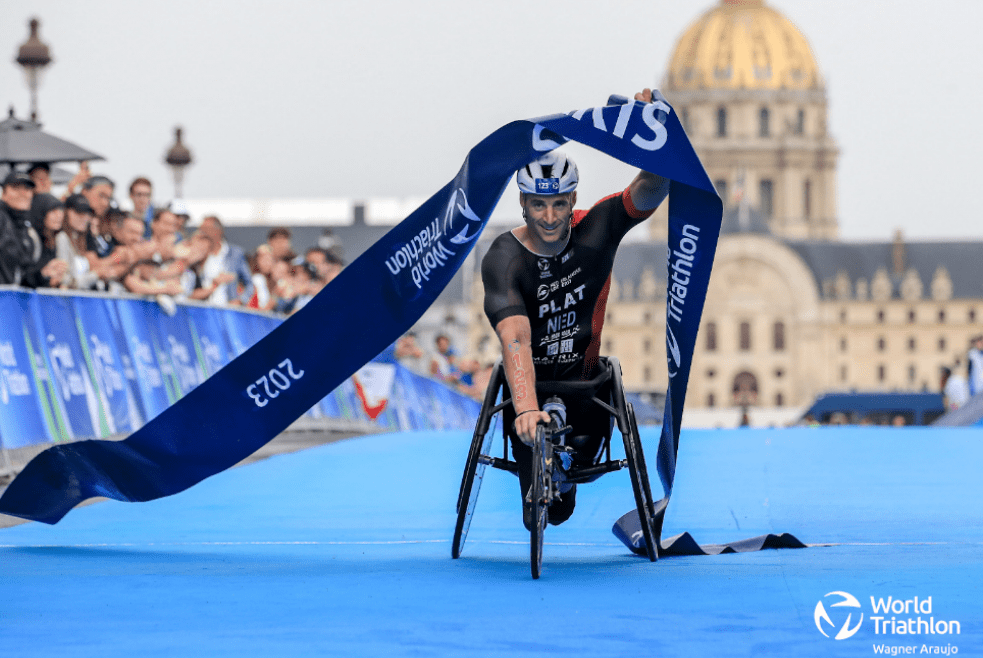
Jetze Plat (NED), Tokyo olympics champion in the PTWC category, at the test event in 2023

MetaSport welcomes para-athletes
At MetaSport, we are deeply committed to promoting inclusion and eagerly anticipate the upcoming Paris Paralympics. Over the years, we have implemented various adaptations to ensure that para triathletes can participate in the MetaSprint Series, Singapore’s largest triathlon event.
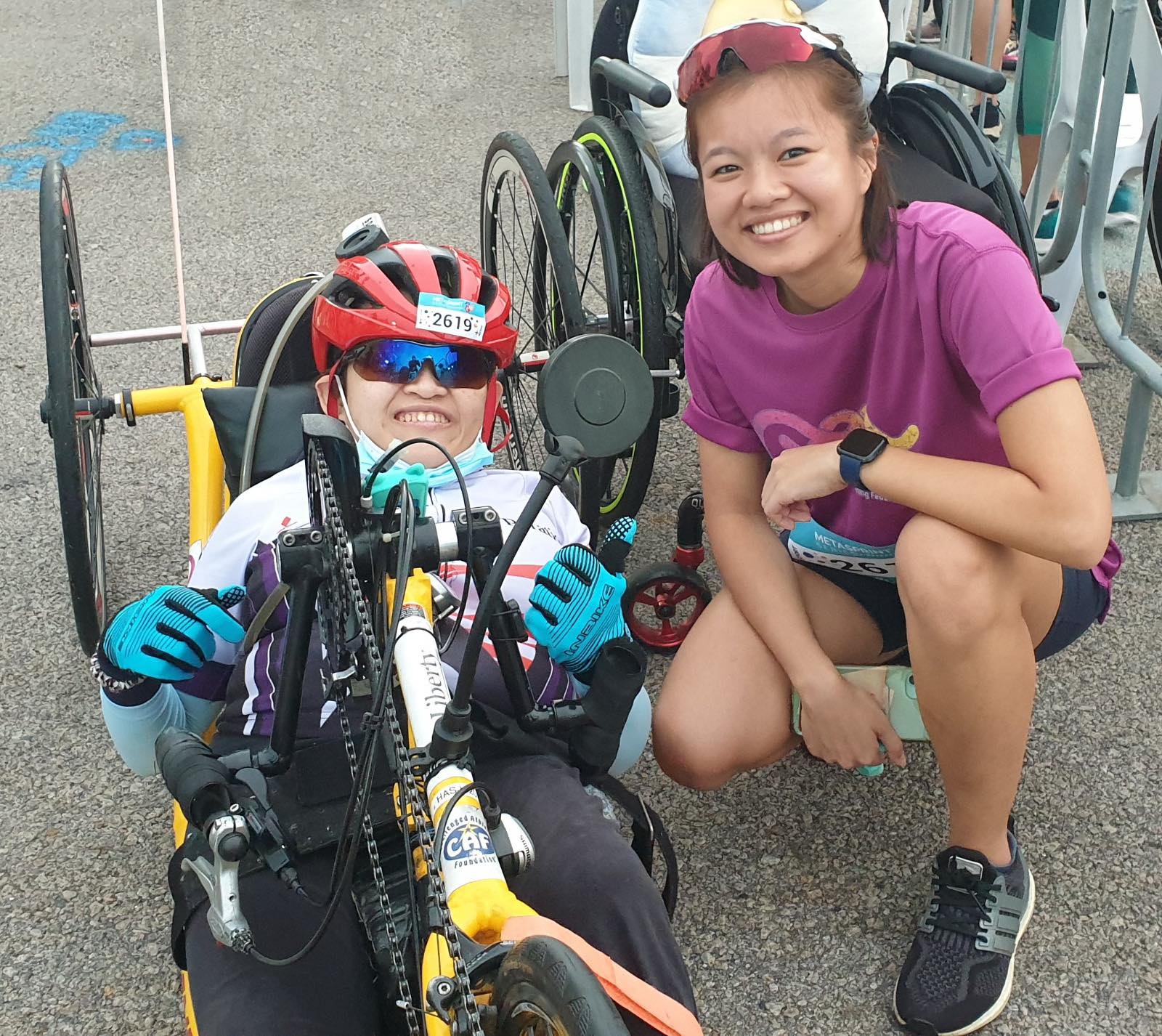
Handcyclist Amanda Mok with her relay team mate Ang Xue Er at the MetaSprint Series Duathlon 2022
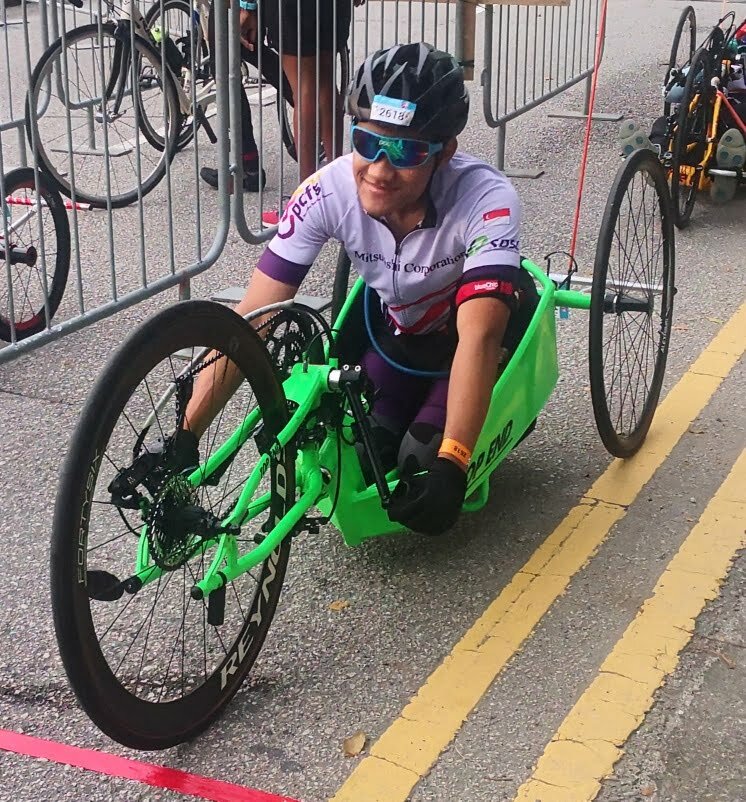
Handcyclist Amsyar Manaf at the MetaSprint Series Duathlon 2022
From our early beginnings (in the noughties), we have been welcoming para-athletes to our events. Singapore-based American paralympian and artist Gregory Burns was the first to impress us by completing our hilly triathlon in Bintan with a hand bike and wheelchair.

Gregory Burns in transition at the Aviva Bintan Triathlon 2007
The MetaSprint Series Duathlon has been a popular event for hand cyclists, teaming up in a relay. (Para-athletes article MetaSprint Series Duathlon 2022). And the amazing team of Running Hour has been instrumental in getting a number of visually impaired athletes to our start line with a guide.
Send us an email if you are a para-athlete and want to compete in one of our races.